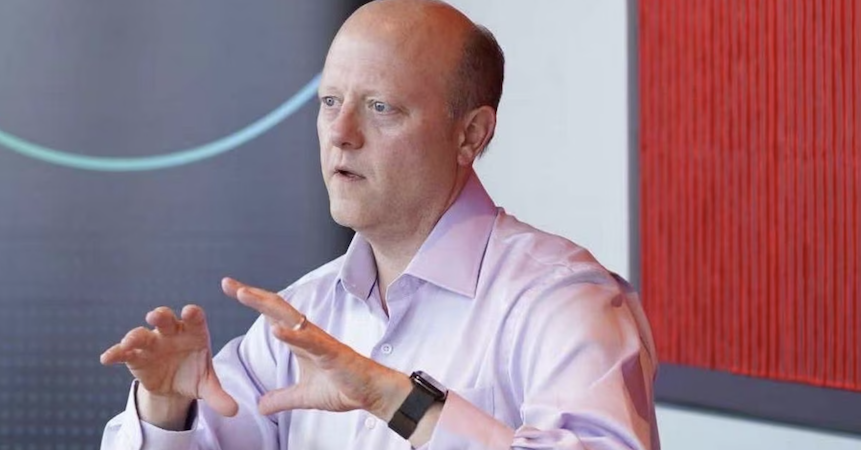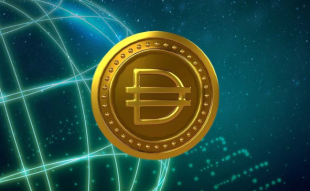Join Our Telegram channel to stay up to date on breaking news coverage
Because of worries over the impending destabilization of USDC, a stablecoin backed by US dollars, the cryptocurrency sector is currently in a state of worry.
In the beginning, it’s important to emphasize that Silicon Valley Bank (SVB), which is in charge of keeping the money supporting USDC, apparently has enough assets to cover all withdrawal requests. SVB has over $209.0 billion in assets and roughly $175.4 billion in deposits as of December 31, 2022, according to data from the Federal Deposit Insurance Corporation (FDIC).
Nonetheless, despite the impressive asset base, questions remain over the liquidity of SVB’s book and the estimated percentage of a haircut in the event that the bank suffered large losses.
This uncertainty results from the fact that the bank’s underlying assets are opaque and that it is unclear how dangerous or illiquid they may be. As a result, there is a chance that the bank would find it difficult to fulfill all of its obligations if SVB’s assets suffer substantial losses or turn illiquid, which might lead to a depeg of USDC. Given that USDC is often utilized as a trading pair on many exchanges, this would have a substantial effect on the overall cryptocurrency market.
Second, the financial support offered by Circle, the firm that produces the stablecoin, is a crucial factor to take into account with relation to the stability of USDC. 77% of Circle’s reserves are kept in highly liquid securities like 1-4 month T-Bills, which are managed by Blackrock and kept at BNY Mellon. T-Bills are typically regarded as exceptionally safe and highly liquid investments, therefore this allocation of reserves offers USDC a significant amount of security.
Silicon Valley Bank is one of six banking partners Circle uses for managing the ~25% portion of USDC reserves held in cash. While we await clarity on how the FDIC receivership of SVB will impact its depositors, Circle & USDC continue to operate normally.https://t.co/NU82jnajjY
— Circle (@circle) March 10, 2023
USDC has an absolute floor of about 0.77 provided by the T-Bills held by Circle, which means that even in the worst-case scenario, the currency shouldn’t depreciate below this level. T-Bills can also be easily sold if Circle wants to raise money right away to cover unforeseen expenses due to their high liquidity.
This gives USDC extra security and reduces any possible hazards related to the stablecoin. It’s also important to note that Circle should theoretically have enough retained earnings and interest income to cover any anticipated “losses” that may result from SVB. This indicates that Circle should be able to pay any potential losses without affecting the stability of USDC even if SVB were to suffer substantial losses or become illiquid.
Lastly, the maximum exposure of Circle is a further factor to take into account when evaluating the potential effects of a depeg of USDC. This business issues the stablecoin to Silicon Valley Bank (SVB), which is in possession of the money used to support USDC. According to experts, Circle’s maximum exposure to SVB will be around $198 million, which is a negligibly small portion of the around $3.3 billion in overall funding for USDC.
Despite the fact that this may seem like a substantial figure, it’s vital to remember that Circle has sizable financial reserves and should be able to absorb any potential losses without materially affecting the stability of USDC. With a current market capitalization of over $1 trillion, the cryptocurrency industry as a whole has expanded dramatically over the previous several years. The possible loss of $198 million in this situation would account for a negligibly small portion of the market. It shouldn’t have a big effect on investor confidence or the overall stability of the cryptocurrency market.
Fourth, the connection between Circle and Coinbase. The partnership between Coinbase and Circle may further comfort investors in USDC. One of the biggest cryptocurrency exchanges in the world, Coinbase, has $4.4 billion in cash on hand and shares 50 percent ownership with Circle of the Centre Consortium, which is in charge of managing the technical aspects of USDC.
Coinbase has a stake in guaranteeing the stability of the stablecoin due to its large investment in USDC and its relationship with Circle. This would imply that Coinbase could offer Circle further assistance if necessary, so enhancing the stability of USDC. In the cryptocurrency sector, Coinbase has a solid reputation and has proven its dedication to legal compliance and monetary stability. As a result, investors may feel more secure as a result of Coinbase’s participation in the management of USDC.
Although there are worries about the probable depeg of USDC, a number of possibilities could occur over the course of the upcoming week. Being a participant in the Centre Consortium and a significant investor in USDC, Coinbase has the potential to offer Circle further help if necessary. This can come in the form of more funding or other resources to support ensuring the stability of USDC. Another option for Circle to strengthen its financial situation is to take on debt or credit facilities from BlackRock or other institutional lenders.
This might provide liquidity and help allay any worries about the USDC’s stability. It’s also conceivable that the Federal Reserve will step in to help Silicon Valley Bank (SVB), the institution that is in charge of the money that underpin USDC. Given the possible effects of a destabilization of the USDC on the larger financial system, even while this may be thought of as an unlikely possibility, it cannot be fully ruled out.
Investors options for risk management
Investors that own USDC have a variety of risk management options at their disposal. One possibility is to short USDC through centralized or decentralized exchanges to protect against USDC/USDT everlasting swaps (CeFi or DEX). If the value of USDC were to fall, this tactic could assist prevent losses. A different tactic is to borrow USDC in exchange for USDT using lending protocols. However, given the potential hazards connected with USDC, this option might be restricted. If investors are worried about the stability of USDC, they might also think about exchanging their USDC for USDT on CeFi exchanges at a cost of roughly 0.95.
This can lessen exposure to any possible dangers related to USDC. It’s also crucial to remember that investors shouldn’t deposit USDC to Circle to redeem their tokens. This is because of the risk of gated redemption, in which investors will then have to wait for a long time to redeem, and have their funds locked in the meantime. Although this has a little chance of happening, but it is still a possibility. As a result, it is advised that investors retain USDC in a secure wallet and use suitable risk management strategies to safeguard their investment.
Furthermore, during times of market turbulence like the present uncertainty surrounding USDC in the cryptocurrency sector, investors must be alert and knowledgeable. It’s crucial to maintain your composure and logical thinking rather than acting rashly or unpredictable decisions. Following updates and analyses from dependable sources, such as financial news sites or industry experts, is one approach to keep updated.
Understanding one’s investment portfolio, including any potential risks or vulnerabilities, is equally crucial. A thoughtful and methodical approach to investing can reduce possible losses and safeguard one’s investments. Investors may navigate market volatility and uncertainty with greater confidence and clarity by staying alert and informed.
Related
- Circle finally assures investors that it will support USDC
- Silicon Valley Bank shares crash by 60% one day after crypto bank Silvergate shut down
- Crypto Bank Silvergate Decides To Shut Down Operations
Join Our Telegram channel to stay up to date on breaking news coverage


